Snake lovers hit southern Illinois for annual migrations
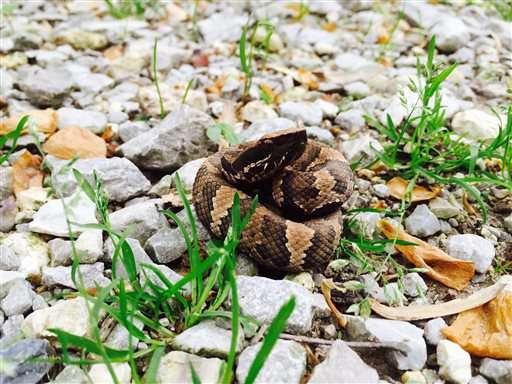
You don't have to be a herpetologist to savor the slice of this federal forest where a stunning array of reptiles and amphibians congregates beneath soaring limestone bluffs overlooking the Mississippi River.
Whether trained zoologist or weekend hiker—or in my case, someone with a lifelong aversion to the scaly creatures after a frightening childhood encounter on a family trip to Florida— a visit to the place locals call Snake Road offers a glance of biological diversity worth the 100-mile (160-kilometer) detour from St. Louis into rural southern Illinois.
For two months each spring, the U.S. Forest Service closes a 2.5-mile (4-kilometer) road segment to car traffic to allow migrating snakes, lizards, frogs and salamanders to move freely from their winter habitat along and beneath the bluffs to their summer feeding grounds in the low-lying swamp to the west. The road is again closed each September and October as the migration reverses.
Before the federal agency first restricted vehicular access to the LaRue-Pine Hills/Otter Pond Research Area more than four decades ago, hunters "would come down here with pickup trucks and shotguns and shoot every snake on the road," said Charlie Hoessle, 83, a retired St. Louis Zoo director and unabashed snake lover who has visited the area since the 1950s.
"The attitude then was, 'The only good snake was a dead snake,'" he said. "In my generation, I was the only kid who was fascinated by snakes. Nobody else wanted to have anything to do with them."
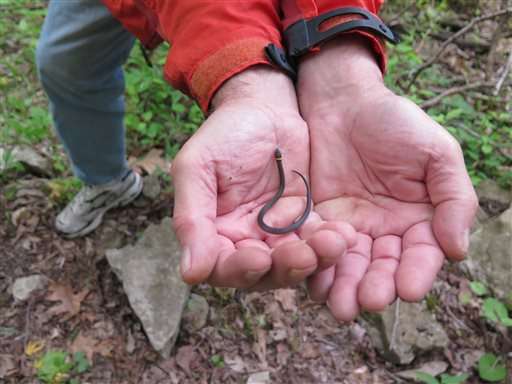
Snake Road now attracts visitors from across the country, said Chad Deaton, a Forest Service wildlife biologist. On a recent weekday afternoon, the visitors included a retired contractor from San Diego, a suburban Chicago father and his two young sons and a group of biology students and their professor from Eastern Illinois University. The surrounding research area is home to more than 1,200 species of plants and animals, including bobcats and bald eagles, and 35 kinds of snakes.
Overturning rocks, peeking into darkened dens or just strolling along the road, the hikers found a ring-necked hatchling small enough to fit in the palm of a hand and a red-backed salamander, as well as the less approachable—and venomous—timber rattlesnake and cottonmouth water moccasin.
Snake Road is no "Raiders of the Lost Ark" —the snakes don't dominate the landscape but instead blend into the natural environment. So patience is a virtue and, with all things Mother Nature, so is a bit of luck.
That said, warm and sunny days when the ground is adequately heated offer the best viewing conditions, according to Deaton, with late morning and late afternoon particularly good times of day.
Hoessle, who was hired by famed zoologist and "Wild Kingdom" TV host Marlin Perkins at the St. Louis Zoo, calls Snake Road an invaluable living classroom to help better understand the natural environment.
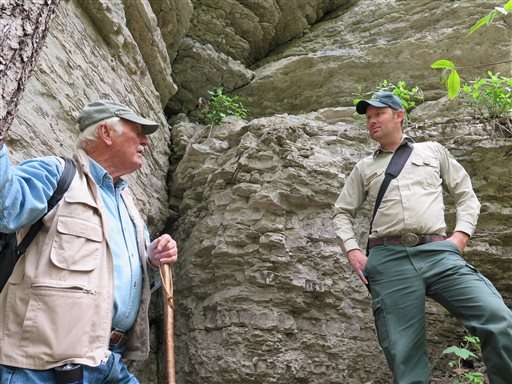
"They're not cuddly like cats and dogs. You don't get a lot of affection," the former exotic pet store owner said, describing the reptilian aversion of many. "But it teaches you an appreciation for wildlife in general. This is a natural world. Man and beast have to live together."
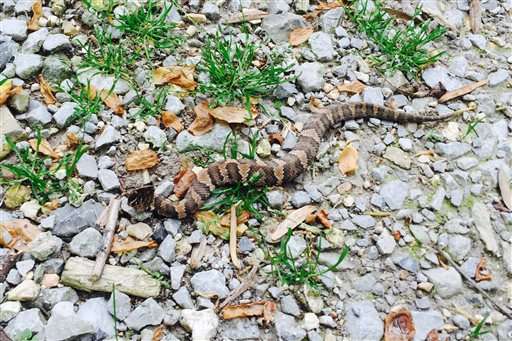
If You Go:
SNAKE ROAD: Cars are kept out from March 15 through May 15 and again from Sept. 1 through Oct. 30. From St. Louis, go east on U.S. 64 and take the first exit after crossing the Mississippi River onto southbound Illinois Route 3. After crossing Illinois Route 149, continue south for 14 miles (22 kilometers), passing the town of Grand Tower, and turn left on Muddy Levee Road just after crossing the Big Muddy River.
Remain on the levee road for 3 miles (5 kilometers) until you reach a T-intersection, then turn right on LaRue Road. The parking lot for the LaRue-Pine Hills/Otter Pond Research Area (better known as Snake Road) is on the right.
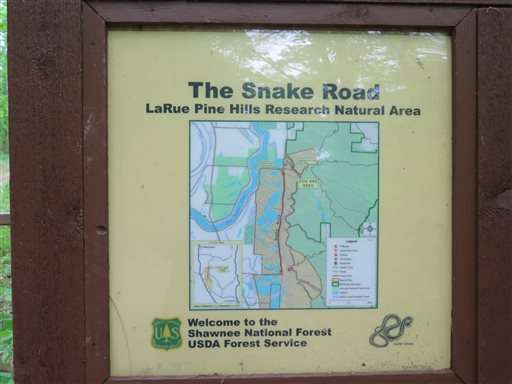
© 2015 The Associated Press. All rights reserved.

















